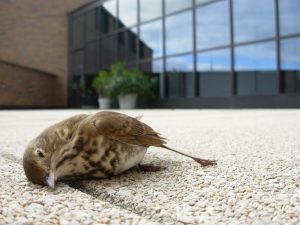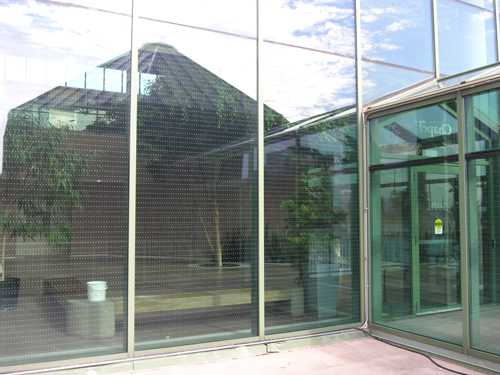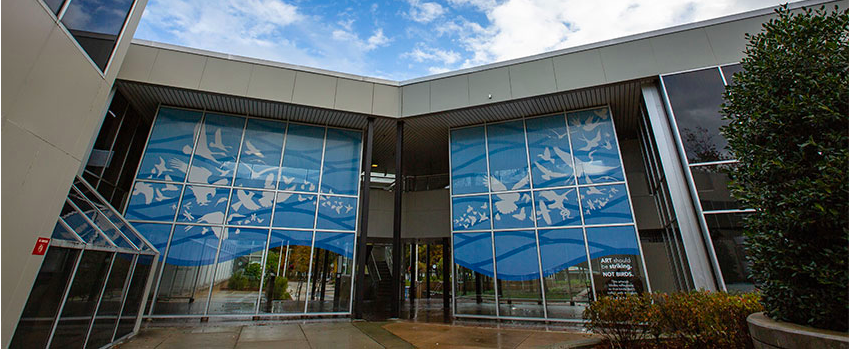 Approximately 56% of avian window collisions in North America occur on commercial structures (see a journal article on this topic here). While it is common to hear about the most dramatic window strike events when they occur on high rises (for example, this incident in Galveston, TX), most collisions occur on low-rise buildings less than 10 stories high.
Approximately 56% of avian window collisions in North America occur on commercial structures (see a journal article on this topic here). While it is common to hear about the most dramatic window strike events when they occur on high rises (for example, this incident in Galveston, TX), most collisions occur on low-rise buildings less than 10 stories high.
Causes of bird-window collisions
Birds strike windows because they do not recognize glass as a barrier. Several factors cause birds to become confused and fly into windows.
- Transparent windows, particularly with vegetation on the opposite side, make it appear to a bird as though it can fly through,
- Windows that directly reflect vegetation make it appear as though the bird can reach that vegetation (see photo below, for example),
- Portions of buildings, such as courtyards with many angled sections and some parking garages, can act as funnels and effectively trap birds, and
- Exterior lights illuminated at night can cause migrating birds to become disoriented and come down to land in an urbanized area, greatly increasing the risk of window strikes.
 Highly reflective windows that reflect vegetation are problematic for birds
Highly reflective windows that reflect vegetation are problematic for birds
Remediation of problem windows
Of course, buildings are not designed to cause injury to our migrating birds; it’s an unwanted side effect. Many architects now design new commercial structures using bird-safe glass. There are also many after-market products that can be applied to existing windows that significantly reduce bird collisions. Even if a building is entirely mirrored on the exterior, it is usually just a few windows with which birds collide – typically those that clearly reflect landscaping. The survey portion of the BirdSafeKC project is designed to clearly document the exact portions of buildings and window panels that are problematic. This allows our partners to cost-effectively treat only the most collision-prone windows.
 Transparent windows surrounding vegetation are another frequent bird strike culprit
Transparent windows surrounding vegetation are another frequent bird strike culprit
Perks of bird strike remediation
Often, implementing window-strike solutions confers other benefits. For example, adding tint to some windows will increase energy efficiency, and extinguishing exterior lighting at night can significantly lower energy costs. Some window treatments are comprised of attractive images or advertisements; there are numerous examples of this in many commercial and campus settings. The photo below is from Stockton University; read more on the campus’s window strike surveys and solutions here.

Solutions to birds striking windows exist for every commercial situation and budget. The American Bird Conservancy provides extensive information on these solutions and how to implement them. BirdSafeKC coordinators can provide local, on-the-ground guidance and in some cases can offer volunteer labor to defray costs of installation. Please contact us at birdsafekc@burroughs.org.
Lights Out
Extinguishing lights on commercial buildings at night can significantly reduce the possibility of migrating birds becoming disoriented and being attracted to the building. Find out more at Lights Out Heartland!
